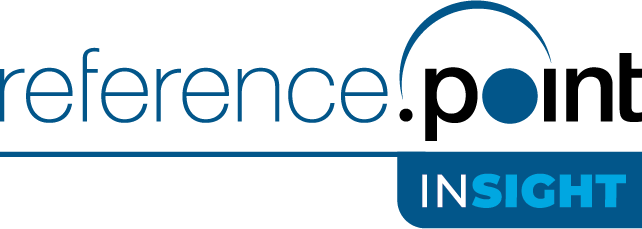
Economic Risk Outlook: Worst Case Scenario May Be Your "Best Case" Outcome
August 2020
Straight To The Point
US institutions and the US market are too optimistic about the overall US economy over the next 24 months. By underestimating the risks, leaders are missing a narrowing window of opportunity to protect their institution
The risk outlook is asymmetric, far more to the downside and little to the upside. We recommend leaders proactively move to protect operations, as these scenarios could lead to unprecedented financial and operational risks – unfortunately even in our Expected Case.
Introduction
Scenario Analysis
In developing this point of view, we examined the three most probable ranges of economic outcomes based on operating assumptions and developed recommendations for client actions associated with each.
- Expected Case: 60%+ probability
- Upside Case: 10% probability
- Downside Case: 25% probability
More extreme downside outcomes represent the remaining 5% probability. Additionally, we judge the possibility of a better than upside case as being less than 1%.
Based on our analysis, we foresee significant downside risk to credit and equity markets, increased personal and corporate defaults, and strained operations for many financial institutions – even in some of our more optimistic scenarios.
Recommended Actions
We recommend leaders proactively consider the following activities regardless of expected outcomes to protect their organizations:
- Lock in longer-term liquidity: eliminate use of short-term funding. We envision there is a tangible risk to short-term liquidity availability at any price at certain points in time.
- Investigate/Implement schooling alternatives for staff.
- Increase use of workforce productivity tools: survey staff to determine major roadblocks.
- Invest in cybersecurity as cyber risks will increase dramatically.
- Reduce expenses judiciously as expense pressure will continue. Do not succumb to the temptation to release expensive, experienced middle managers, as these subject matter experts, tempered by business cycle experience, will be critical to success – maybe even survival.
- Continue to review supply chain processes: Assume that the likelihood of further deterioration in links with China is probable regardless of the outcome of the election.
- Review currency mismatches in global operations, with a focus on avoiding being short US dollars in case there is a continued global freeze. Running a “squared” position would be recommended.
- Stress test operations to identify operating and cash flow break-evens and what actions can be taken (before) those break-evens are reached. Positive cash flow is the “existential” issue. Mistakes in other areas can be damaging to the firm’s share price and reputation – but can be survived.
Navigating the Expected Case
Primary Operating Assumptions
- Treatments – A vaccine(s) and/or other treatment options will be identified, produced, and distributed by the end of the second quarter of 2021.
- Policy Response – Regardless of which party wins in November, the Administration and Congress will pass legislation that enables the Treasury and Federal Reserve to:
- Provide material and massive financial aid and liquidity to the markets.
- Support state and municipal governments up to the level of COVID-created funding deficiencies (but not deal with pre-COVID deficits).
- Operate as the “market maker of last resort” across multiple asset classes, possibly including equity ETFs.
- China – China will experience positive growth (in the 3% range); maintain a somewhat stable economy limited by reduced domestic demand; and return to purchasing global commodities in reasonable quantities – but will not be as significant of a global growth engine as over the past 15 years.
- Consumer Behavior – Individuals align behaviors close to CDC recommendations with respect to social distancing and the use of masks.
- Inflation & Interest Rate – Overall interest rates (both real and nominal) will remain historically low. Inflation will also remain low on a macro-basis (2% range or less), but there will be micro-bursts of inflation, particularly where distribution channels break down to include certain food commodities.
Economic Outcomes
- Schools will move close to the 75% physical enrollment range, allowing parents to increase work focus to a level that comes close to – but stops short of – the pre-COVID era.
- Unemployment will remain stubbornly elevated:
- Before the third quarter of 2021, a significant level of “real” unemployment will remain (in the 10-12% range), which will include discouraged workers who have given up looking for jobs. With many workers receiving materially reduced overall compensation, financial defaults will occur.
- After the introduction of a vaccine (or other treatments), unemployment will remain stubbornly in the 8-10% range. Workforce participation, both in terms of the number of jobs and the “quality” of jobs, will remain a challenge for at least the following 12 months through the end of 2022.
- Major industries will continue under severe distress with entertainment, transportation, retail, energy, education, and real estate particularly severely impacted (to include record bankruptcies filings).
- Fixed income markets will remain relatively stable among the higher-rated credits; equity markets may trade down significantly, but with continued sharp spikes in volatility.
Economic uncertainty could result in unprecedented financial and operational risks even within our Expected Case.
A Review of Downside & Upside Cases
Downside Case Consequences
Our downside case rests on the following key assumptions:
- Politics become even more muddled with a disrupted November election. The Administration and Congress cannot find timely bipartisan agreement on public policy execution, and therefore, support activity is limited and fragmented. Signaling to the population continues to be inconsistent with CDC recommendations.
- Vaccine(s) introduction is delayed in development, distribution, or market acceptance through late 2021 or 2022.
- Schooling for children remains problematic and less than 50% of school-age children can attend in person on a five days per week basis.
Any of the above alone will result in severe negative consequences for the US economy including but not limited to:
- Federal failure to speak with one unified science / health voice leads to counterproductive behavior in terms of mask wearing and social distancing.
- Individual bankruptcies will skyrocket to unprecedented levels. Given the ongoing stress of consumers and businesses, bankruptcies will spread beyond the industries identified in the Expected Case.
- Financial distress will accelerate the failure of many colleges, adding to unemployment.
- State and municipal governments will be short of tax revenue and have limited borrowing capacity, thus necessitating the need to cut services; this scenario will make it even more challenging to help those most in need.
- The lower-rated credits in the fixed income market will see a major decline in prices; and the equity markets will suffer a major retrenchment.
Upside Case Outcomes
Our upside case is driven by the following assumptions:
- Increased bipartisan cooperation between the Administration and Congress, resulting in major infrastructure investment activity.
- Strong proactive support for the unemployed.
- Material support to educational institutions at all levels, particularly for children.
- State and municipal assistance allows local governments to maintain services and provide support to the significant number of those in need (in terms of food, shelter, and other benefits).
- Early confidence in the safety of work, shopping, and travel.
We believe the likelihood of the upside case remains slim; proactive planning for the worst-case scenario may be your “best case.” Leaders should consider acting now to mitigate financial and operational risks that we believe are highly probable events in the current environment.
About Reference Point
Reference Point is a strategy, management, and technology consulting firm focused on delivering impactful solutions for the financial services industry. We combine proven experience and practical experience in a unique consulting model to give clients superior quality and superior value. Our engagements are led by former industry executives, supported by top-tier consultants. We partner with our clients to assess challenges and opportunities, create practical strategies, and implement new solutions to drive measurable value for them and their organizations.
